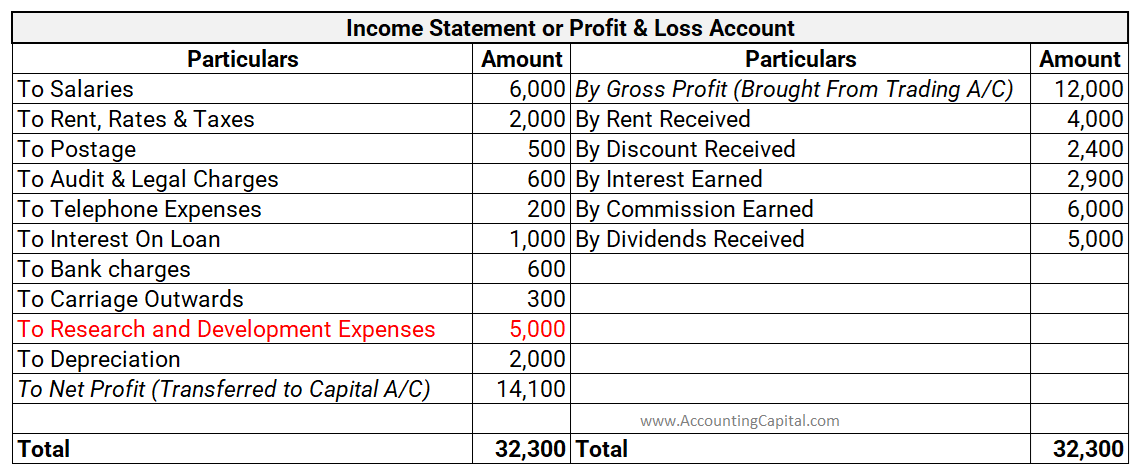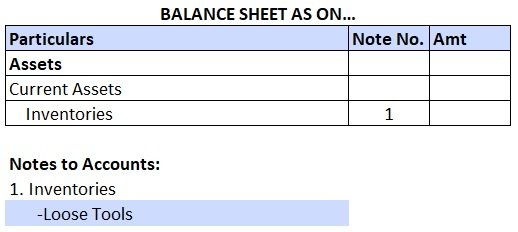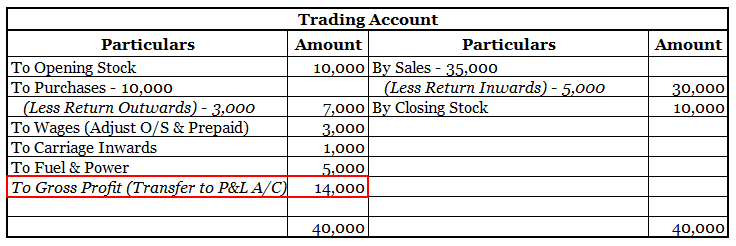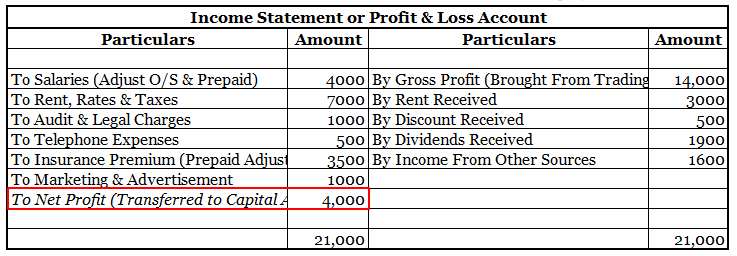Definition Net profit is defined as the excess of revenues over expenses during a particular period. For a business i.e. company/firm, it is a liability towards shareholders/promoters/partners/proprietors, etc. as it is their capital that has earned these profits. When the result of this computationRead more
Definition
Net profit is defined as the excess of revenues over expenses during a particular period.
For a business i.e. company/firm, it is a liability towards shareholders/promoters/partners/proprietors, etc. as it is their capital that has earned these profits.
When the result of this computation is negative it is called a net loss.
Net profit may be shown before or after tax.
Formula :
Total Revenues – Expenses
Or
Total Revenues – Total Cost ( Implicit And Explicit Cost )
Liabilities
It means the amount owed (payable) by the business. liability towards the owners ( proprietor or partners ) of the business is termed an internal liability.
On the other hand, liability towards outsiders, i.e., other than owners ( proprietors or partners ) is termed as an external liability. For example – taxes owned, trade payables, etc.
For example creditors, bank overdrafts, etc.
Assets
An asset is a resource owned or controlled by a company and will benefit the business in current and future periods.
In other words, it’s something that a company owns or controls and can use to generate profits today and in the future.
For example – cash, building, etc.
Why debtors are treated as a liability?
Now let me explain to you why net profits are treated as a liability and not as an asset because of the following characteristics :
• Net Profit shows the credit balance of the Profit And Loss Account.
• It is treated directly in the balance sheet by adding or subtracting from the capital.
• Net Profit is a measure of the profitability of the company after taking into consideration all costs incurred during the accounting period.
• Net profit is the last line in an income statement and is the figure that concerns most people who use such a statement.
• Net income is reported on the income statement (profit and loss account) and forms a key indicator of a company’s performance.
Importance Of Net Profit
Now I will let you know the importance of net profit which is as follows :
Owners
Net profit allows owners to calculate the tax to be paid and how much earnings need to be distributed to the business owners.
Investors
Investors need to see net profit as they need to access the risk before investing they basically judge the revenue-generating capacity of a firm based on net profit.
Competitors
For making the comparison competitors tend to look at the net profit of the company to know how are they performing in the industry so that they can build themselves strong.
Creditors
Creditors look at the net profit for the purpose of obtaining business loans or we can say that determines a prospective debtor’s capacity to pay future debts.
Conclusion
Now after the above explanation, we can say that,
Net Profit is shown on the liability side as it belongs to shareholders so the company has to give it to shareholders so we are showing it under the liability side.
Net Profit with respect to the company is a liability as it has to pay it to shareholders.
Net Profit with respect to shareholders is an asset.
See less










The sole proprietorship is a business that is unincorporated and owned by a single person. The owner of the business invests capital in the business in the form of cash, any asset or stock, or in any other form. In, sole proprietorship owner and business are inseparable. Interest on capital is the aRead more
The sole proprietorship is a business that is unincorporated and owned by a single person. The owner of the business invests capital in the business in the form of cash, any asset or stock, or in any other form. In, sole proprietorship owner and business are inseparable.
Interest on capital is the amount paid by the entity/business to the owners. It is an expense to the business and income for the proprietor, and interest is adjusted in the owner’s capital account. It is calculated on an agreed percentage and for a certain period. It is paid before calculating net profit.
If there is a loss, no interest will be paid on capital.
Journal Entry for Interest on Capital in Sole Proprietorship:
2. Closing interest on capital account
In sole proprietor’s Profit and Loss A/c interest will be recorded as an expense on the debit side and will be added to the owner’s capital in the Balance Sheet is considered as an adjustment to the capital account.
For example, A invested Rs 1,00,000 in a business. He wants to adjust 5% interest on his capital, then the entry will be:
2. Closing interest on capital account
In the case of a partnership, the treatment is the same as done in a sole proprietorship. The interest rate is agreed upon by the partners and is mentioned in the partnership deed. No interest is provided on the capitals of the partners if not mentioned in the deed.
If in a particular period, the partnership firm incurs a loss, then no interest will be provided to the partners.
See less